
When designing in shade, many gardeners use too much green foliage without enough color. We recently faced a landscape challenge of designing a foundation planting for a shady spot in front of some low windows, a common design situation many gardeners face. With a little design consideration and careful selection of some tough plants well suited to Southern gardens, we brightened a shady spot and got twelve months of interest.

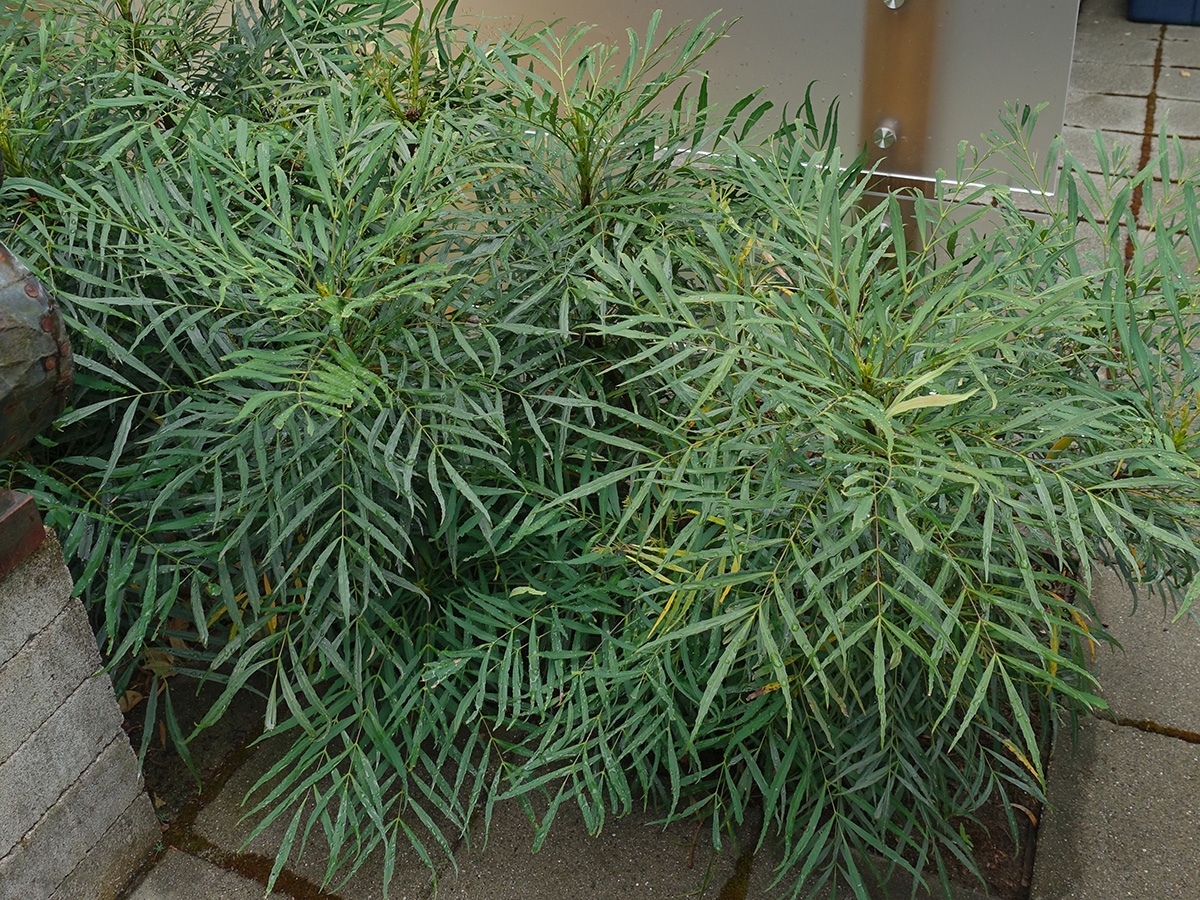
Add low-growing evergreens as textural anchors
The windows in this spot are low, so plant selections in a situation like this need to be low growing, unless pruning is your favorite pastime. We chose a nativar, ‘Rosa’s Blush’ blueberry (Vaccinium darrowii ‘Rosa’s Blush’, Zones 7–10) as a low-growing fine-textured background, with a taller ‘Soft Caress’ mahonia (Berberis eurybracteata syn. Mahonia eurybracteata ‘Soft Caress’, Zones 7–9) as a corner accent plant. These plants provide our evergreen base.
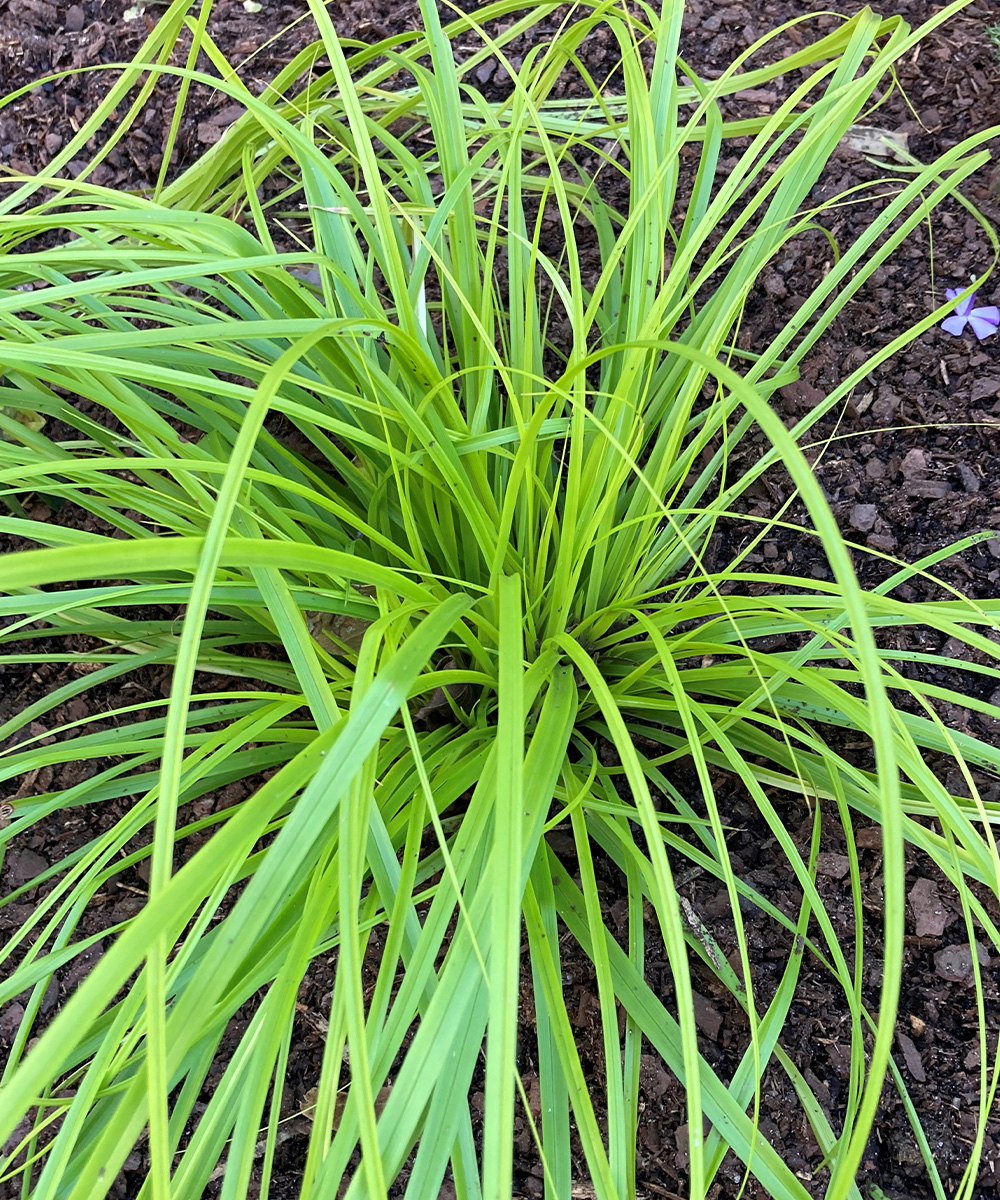
Choose an eye-popping central color
Adding color is the next step. In small areas, using a limited color palette helps keep the space uncluttered. For this bed we are choosing lime green as the main color. Fortunately, lime green is very popular in the garden industry these days, so there are many choices. As accent plants we used ‘Everillo’ sedge (Carex oshimensis ‘Everillo’, Zones 6–8), which is an airy, grassy, evergreen perennial. It produces a mound of lime green foliage about 12 inches tall and a bit wider and grows best in bright shade. As fillers we used two types of heucherella (× Heucherella spp. and cvs., Zones 4–9), because most have better heat tolerance than heuchera (Heuchera spp. and cvs., Zones 3–8) for Southern gardens. ‘Solar Eclipse’ heucherella (× Heucherella ‘Solar Eclipse’, Zones 4–9) is lime green and has red centers to the leaves. It grows best in morning sun to shade. Less than 12 inches tall, it can spread to be twice as wide.
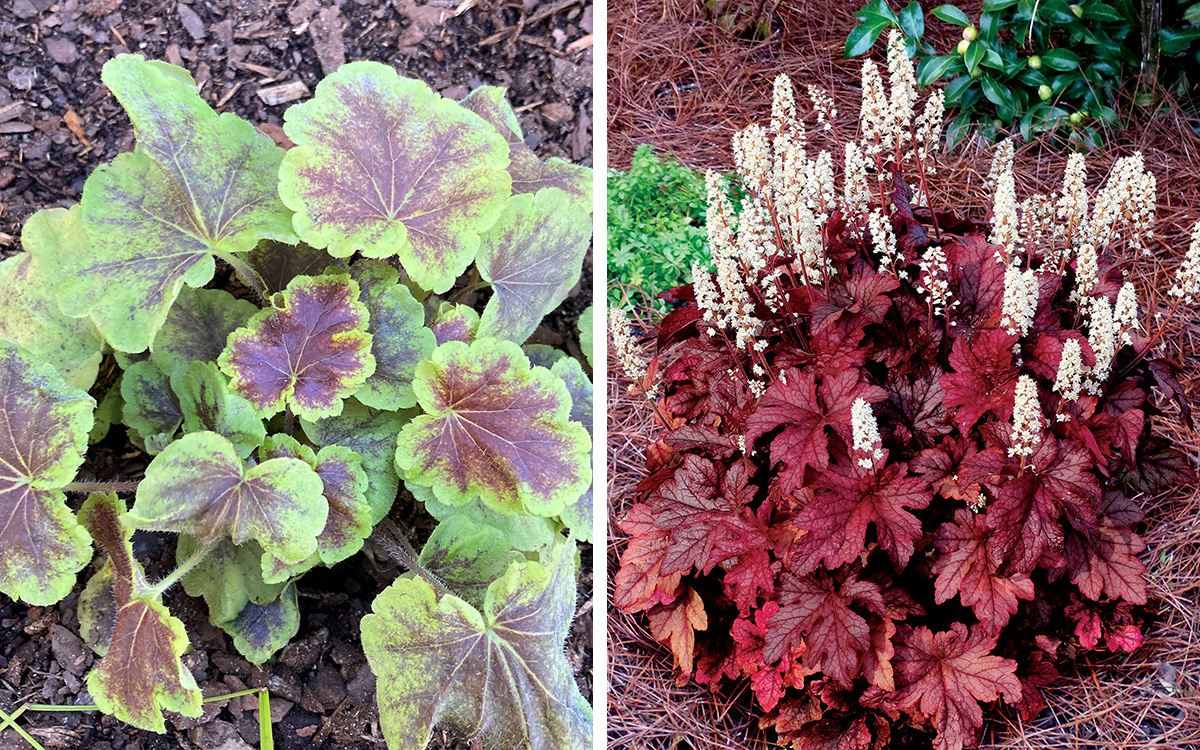
Tie in accent colors that contrast with your central color
We chose lavender, pink, and blue for our accent colors. ‘Peach Tea’ heucherella (× Heucherella ‘Peach Tea’, Zones 4–9) has pink-colored foliage. Both ‘Peach Tea’ and ‘Solar Eclipse’ are evergreen. They were planted in swathes to fill the space with color. Limelight lady fern (Athyrium otophorum, Zones 5–9) is our specimen plant. This beautiful fern’s new leaves are a soft lime green with rose-colored stems. They catch the eye in the center of the design. This fern grows best in shade and can grow up to 2 feet tall and wide.
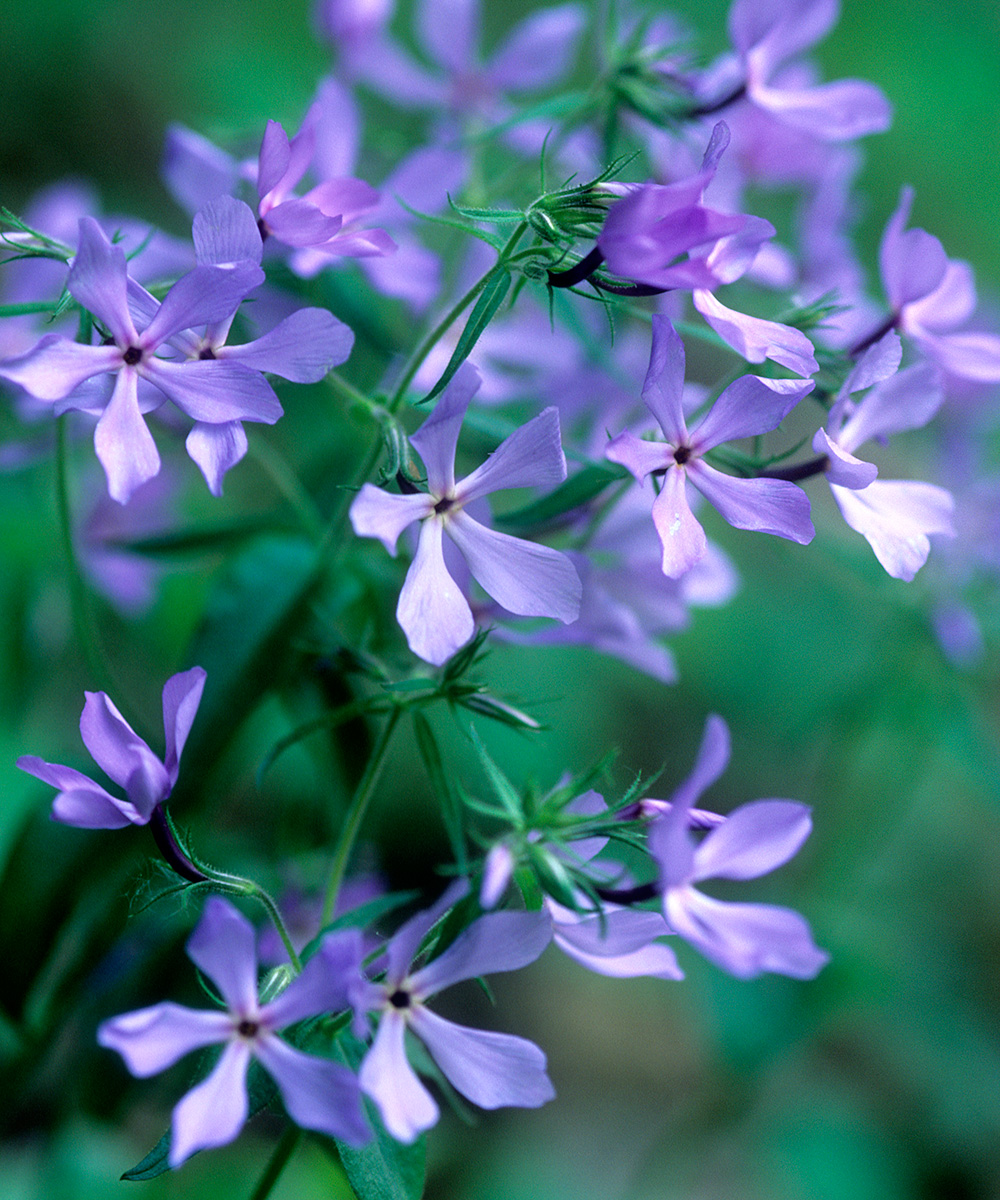
Our ground covers are three low-growing plants that flower primarily in the spring and early summer. Woodland phlox (Phlox divaricata, Zones 3–8) has lavender-blue flowers, ‘Wanda’ phlox (Phlox ‘Wanda’, Zones 5–10) produces lavender-pink flowers, and roof iris (Iris tectorum, Zones 4–9) flowers in spring with light blue flowers.
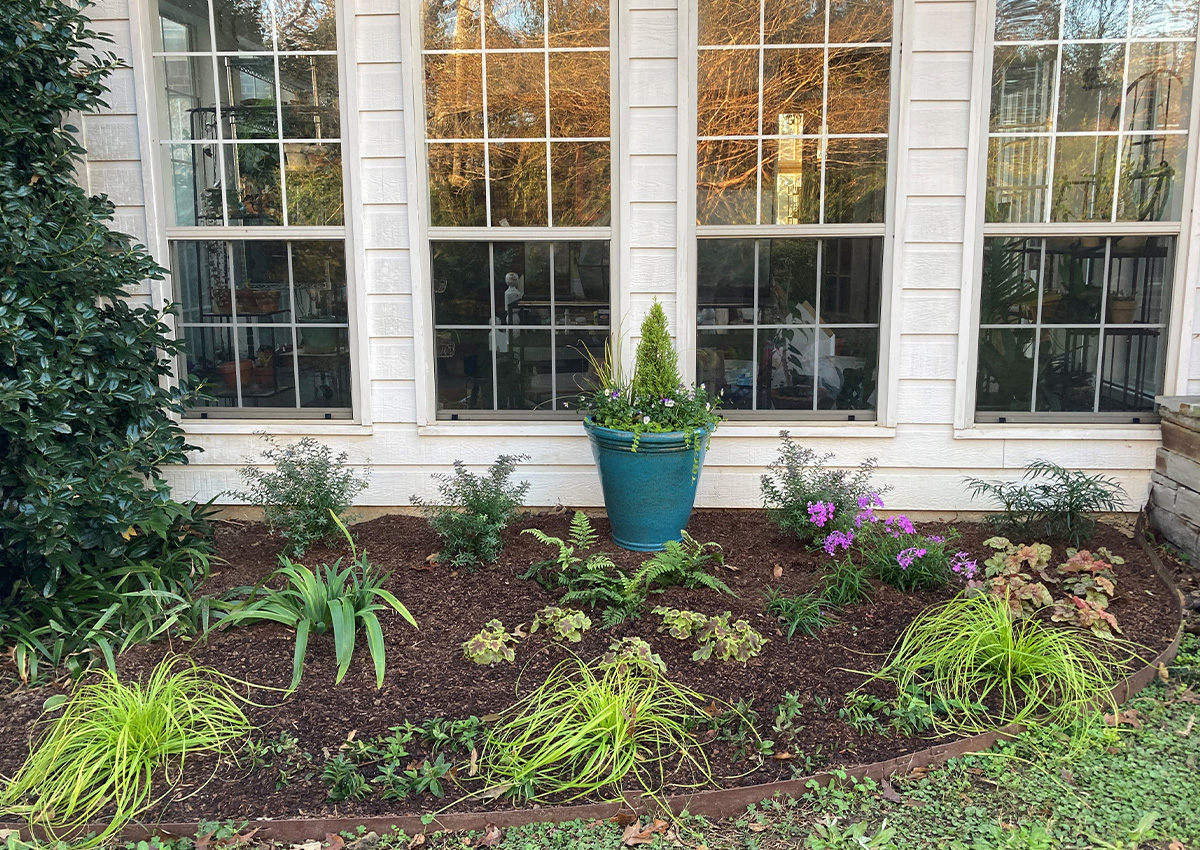
A single container provides height and opportunity for change
In order to provide the appearance of height without blocking the windows, we used a tall and narrow container. Color is added to the bed without worry about seasonality, and the color in the container can be changed. Best of all, no pruning is necessary in this design.
—Jason and Shelley Powell own and manage Petals from the Past, a garden center in Jemison, Alabama.



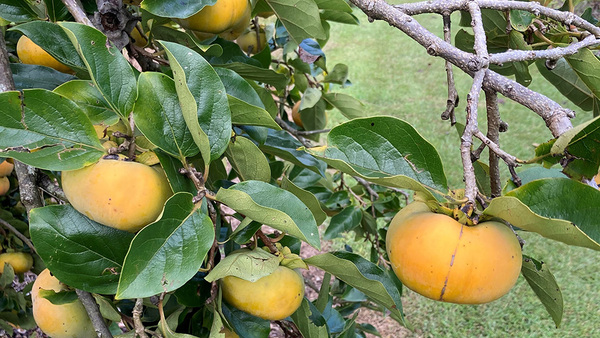
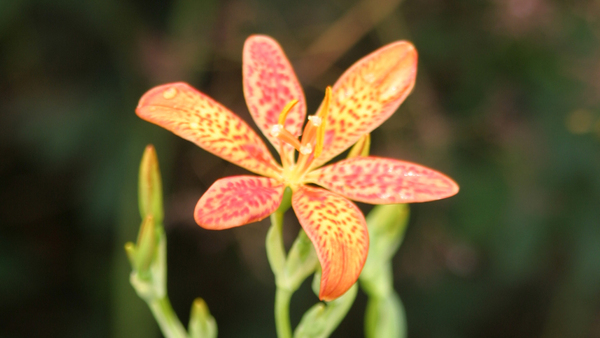












Comments
Log in or create an account to post a comment.
Sign up Log in